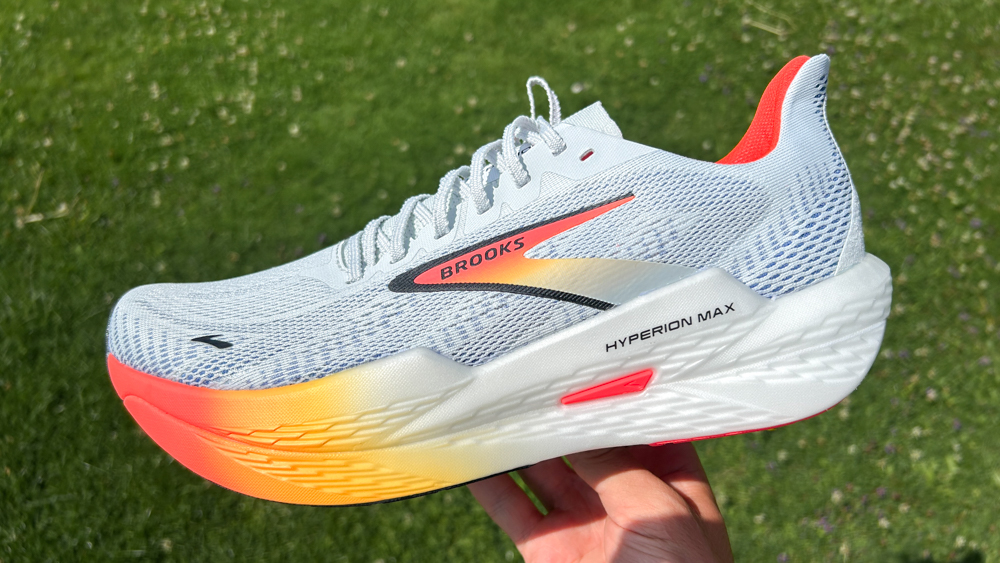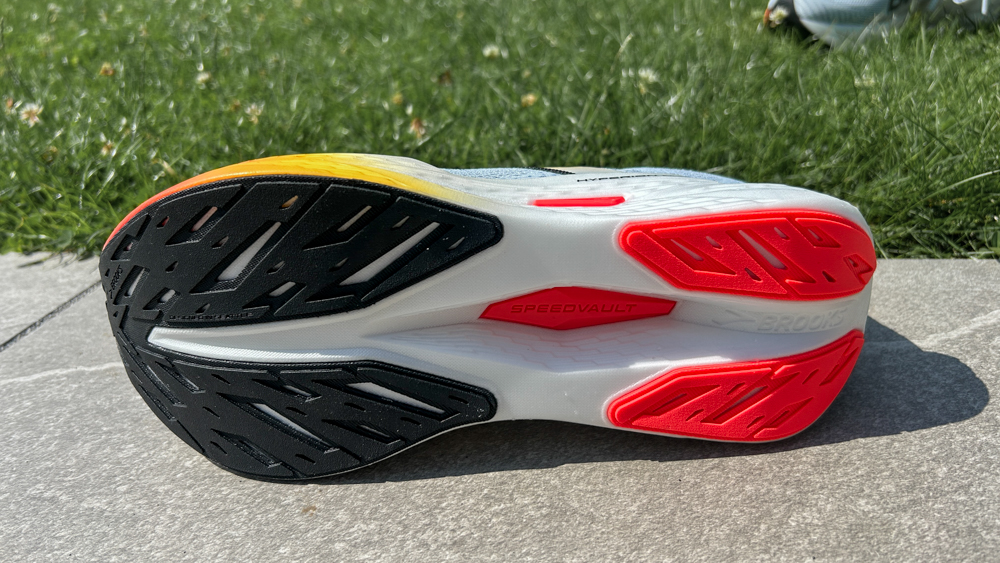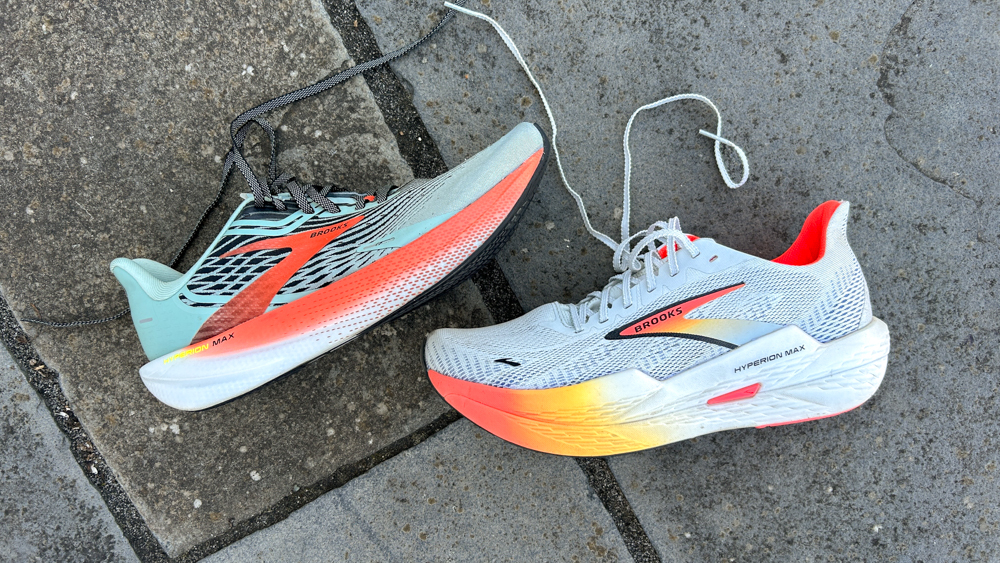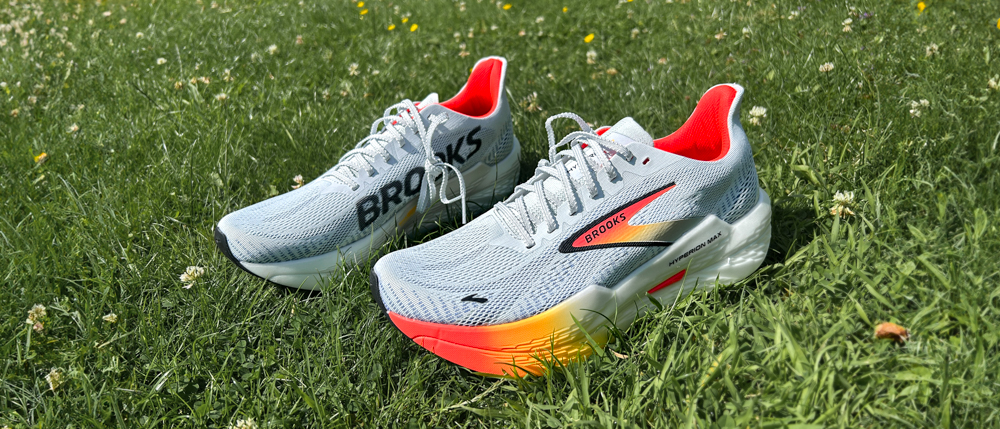Tom's Guide Verdict
The Brooks Hyperion Max 2 is a big update on its predecessor and the most versatile shoe in the Brooks range as a plated trainer that can handle everything from short speed sessions to easy long runs.
Pros
- +
Plastic plate for added propulsion
- +
Comfortable cushioning
- +
Effective rocker
Cons
- -
Heavier than some rivals
- -
Some might prefer a softer ride
Why you can trust Tom's Guide
The Brooks Hyperion Max 2 is a plated training shoe that delivers a fast and comfortable ride, and an upgrade on the original Hyperion Max thanks to the higher stack height and the addition of a plastic plate to the midsole.
It can compete with the best running shoes in its category of ‘super-trainer’, like the Saucony Endorphin Speed 4, though it’s a little heavier than ideal for your fastest runs. That said, the Hyperion Max 2 is more stable than other plated trainers, which might make it more suitable for some runners, and it’s particularly good for long distance training runs.
I’ve run over 35 miles in the shoe for my full Brooks Hyperion Max 2 review, and have also tested a variety of other plated training options along with the original Hyperion Max.
Brooks Hyperion Max 2 review: price and availability

The Brooks Hyperion Max 2 launched in July 2024 and it costs $180 in the US and £160 in the UK. That’s a $10 price rise on the original Hyperion Max in the US, but the Hyperion Max 2 is priced in line with other plated trainers of its type, like the Mizuno Neo Vista, Puma Deviate Nitro 3 and Saucony Endorphin Speed 4.
Brooks Hyperion Max 2 review: design and fit
The Brooks Hyperion Max 2 is available in two colors for the men’s and women’s shoes, with men’s sizes running from 7-15 and women’s from 5-12. I found that the shoe fit me well in my normal running shoe size, with the lightweight upper holding my foot securely and comfortably.
Standing 36mm tall at the heel and 30mm at the forefoot, the Hyperion Max 2 has a 6mm drop. The stack height has increased while the drop has decreased by 2mm compared with the original Hyperion Max, which does lead to a gain in weight.
In my US Size 10 the Hyperion Max 2 weighs 9.6oz, around 2oz more than the Hyperion Max, which didn’t have a plate as well as having a lower stack height.
Get instant access to breaking news, the hottest reviews, great deals and helpful tips.

Upper
The Hyperion Max 2 has a lightweight and breathable mesh upper, with just a little padding around the collar of the shoe. There’s an internal heel counter to add more structure and support at the back of the shoe, and the high heel tab cradles the achilles tendon.
I had no complaints with the upper during my testing, which included a long run in hot conditions when the mesh was breathable and comfortable. I usually prefer a more flexible heel counter on my running shoes as stiff ones can irritate my achilles tendon, but I didn’t have any problems on this front with the Hyperion Max 2.
Midsole
The major changes Brooks has made to the Hyperion Max 2 are all found in the midsole. The stack height has increased by 4mm at the heel and 6mm at the forefoot compared with the original Hyperion Max, and the foam used is now DNA Flash v2. This is a nitrogen-infused EVA that’s lighter and bouncier than the DNA Flash used in the Hyperion Max.
Brooks has also added a plastic SpeedVault plate to the midsole of the Hyperion Max 2, which adds structure to the high stack of foam as well as a more propulsive feeling to the ride. The shoe also has a rocker profile to move you from heel to toe smoothly and quickly.
Outsole

Rubber has been used sparingly on the bottom of the Hyperion Max 2 to keep the weight of the shoe down, but there are large sections of rubber on the heel and forefoot to ensure reliable grip and increase durability. A cutout in the center of the outsole shows off the plastic plate inside the midsole.
Brooks Hyperion Max 2 review: running performance
The original Brooks Hyperion Max was a lightweight, fast training shoe, but it didn’t match the propulsive standards of plated shoes with higher stacks of soft, springy foams. The Hyperion Max 2 is a more competitive shoe, which helps Brooks keep up with the competition, as with most brands now have a versatile plated trainer.
While the midsole foam is still not soft and bouncy, the Hyperion Max 2 is comfortable and protective over long distances, which I found when running a progressive half marathon during training where I increased my pace from around 7min/mile down to under 6min/mile.
The rocker was noticeable and appreciated, and the extra pop from the plate helps to maintain faster paces compared with the original Hyperion Max.

The Hyperion Max 2 is also a comfortable shoe to use for easy runs, thanks partly to the fact it has a plastic plate, rather than a stiffer and firmer carbon plate. It’s a do-it-all shoe that impressed me over long distances in particular, and if you were marathon training it would be a good option.
It does lack a little of the speed you can get from lighter shoes though, which counts against it for flat-out interval sessions or racing. A shoe like the Saucony Endorphin Speed 4 has more top-end speed than the Hyperion Max 2 while also being similarly comfortable for easy runs.
The midsole foam also feels less exciting than with other shoes like the Mizuno Neo Vista, which is much softer and springier. But the Brooks Hyperion Max 2 does have a more stable feel than many high-stack plated training shoes though, partly because its foam is firmer and less springy. Even if you are a neutral runner, this extra stability is helpful over longer runs.
Should you buy the Brooks Hyperion Max 2?
The Brooks Hyperion Max 2 is a good running shoe and while I think it's outperformed by other super-trainers, it is a valuable addition to both the Brooks range and the market at large, offering versatility and the benefits of a plated shoe in a more stable design than you get elsewhere.
I still rate the Saucony Endorphin Speed 4 as the top plated training shoe, and the Mizuno Neo Vista is more fun than the Hyperion Max 2 thanks to its bouncy foam. The plate-less Asics Superblast 2 is also a more impressive and versatile shoe, though more expensive than the Hyperion Max 2.
At some point I hope to see Brooks introduce some springier foams to its shoes, perhaps using the Peba-based materials most brands are using for their speed-focused shoes, but the Hyperion Max 2 is still worth considering if you do want a plated all-rounder for your training.

Nick Harris-Fry is an experienced health and fitness journalist, writing professionally since 2012. He spent nine years working on the Coach magazine and website before moving to the fitness team at Tom’s Guide in 2024. Nick is a keen runner and also the founder of YouTube channel The Run Testers, which specialises in reviewing running shoes, watches, headphones and other gear.
Nick ran his first marathon in 2016 and became obsessed with the sport. He now has PBs of 2hr 25min for the marathon and 15min 30sec for 5K. Nick is also a qualified Run Leader in the UK.
Nick is an established expert in the fitness area and along with writing for many publications, including Live Science, Expert Reviews, Wareable, Coach and Get Sweat Go, he has been quoted on The Guardian and The Independent.

